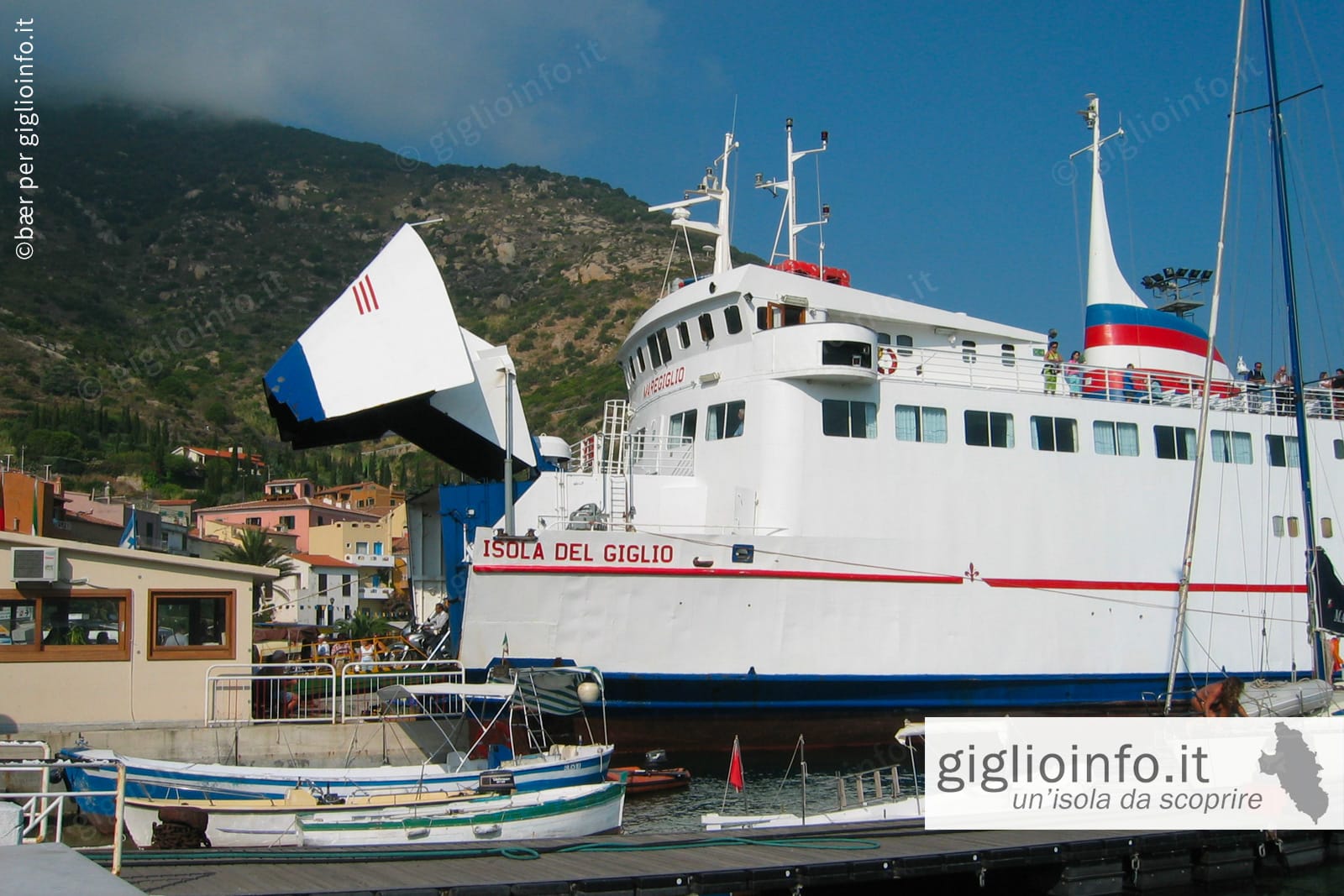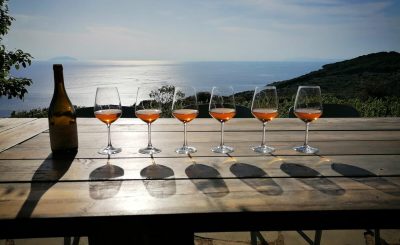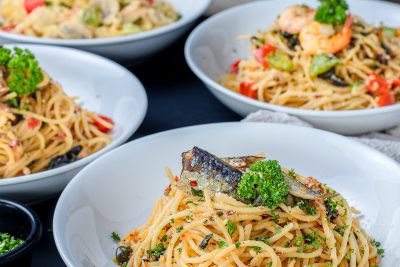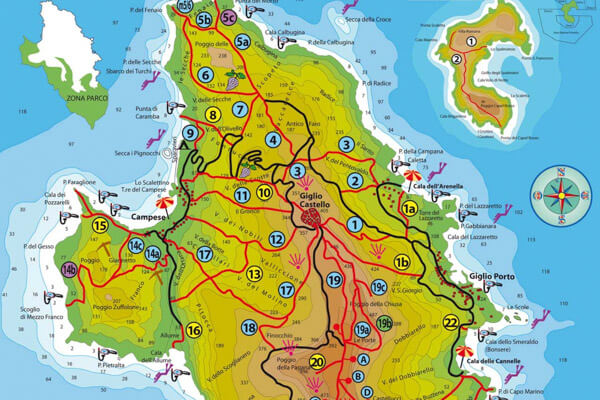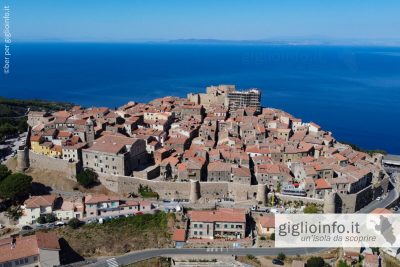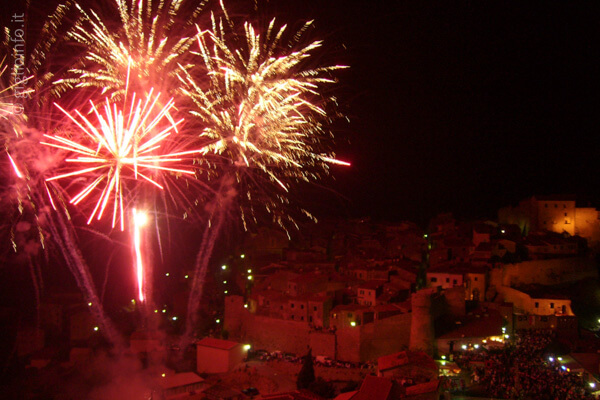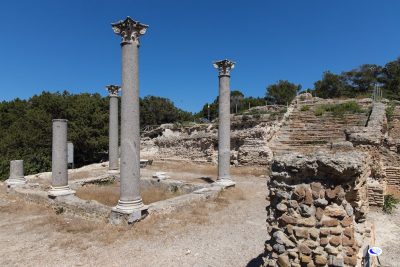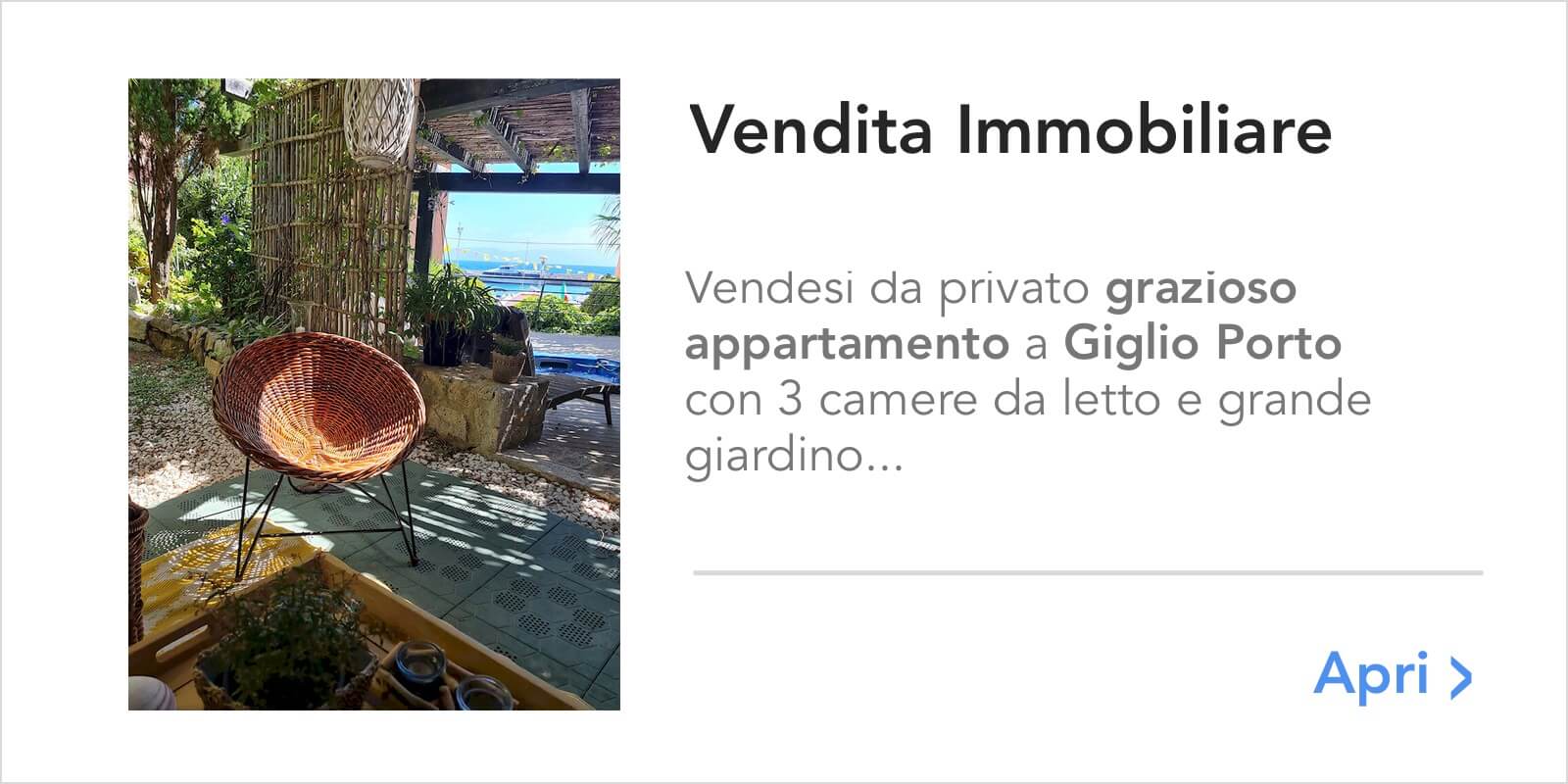Wines and Viticulture in Giglio
Wine has been produced on the island of Giglio since ancient times on small terraces overlooking the sea. Ansonaco is the traditional name of the most widespread grape variety, which produces an excellent and full-bodied white wine.
In the past, Giglio’s production was abundant and there was a flourishing export trade, but with the arrival of tourism in the 1950s, not only agriculture but also viticulture was abandoned, and only a few people tended their small vineyards for their own consumption.
It was not until fifty years later, in 1999, that the first project to restore an abandoned vineyard was initiated by the Altura winery, which began producing and bottling wine in larger quantities, creating the island’s first wine label.
In the years that followed, other wineries on the island followed suit, restoring vineyards and creating new labels for the island’s traditional wine, Ansonica. In the last decade, the island has also been discovered by Tuscan wineries, and today there are 9 wineries on the island.
Advertisement
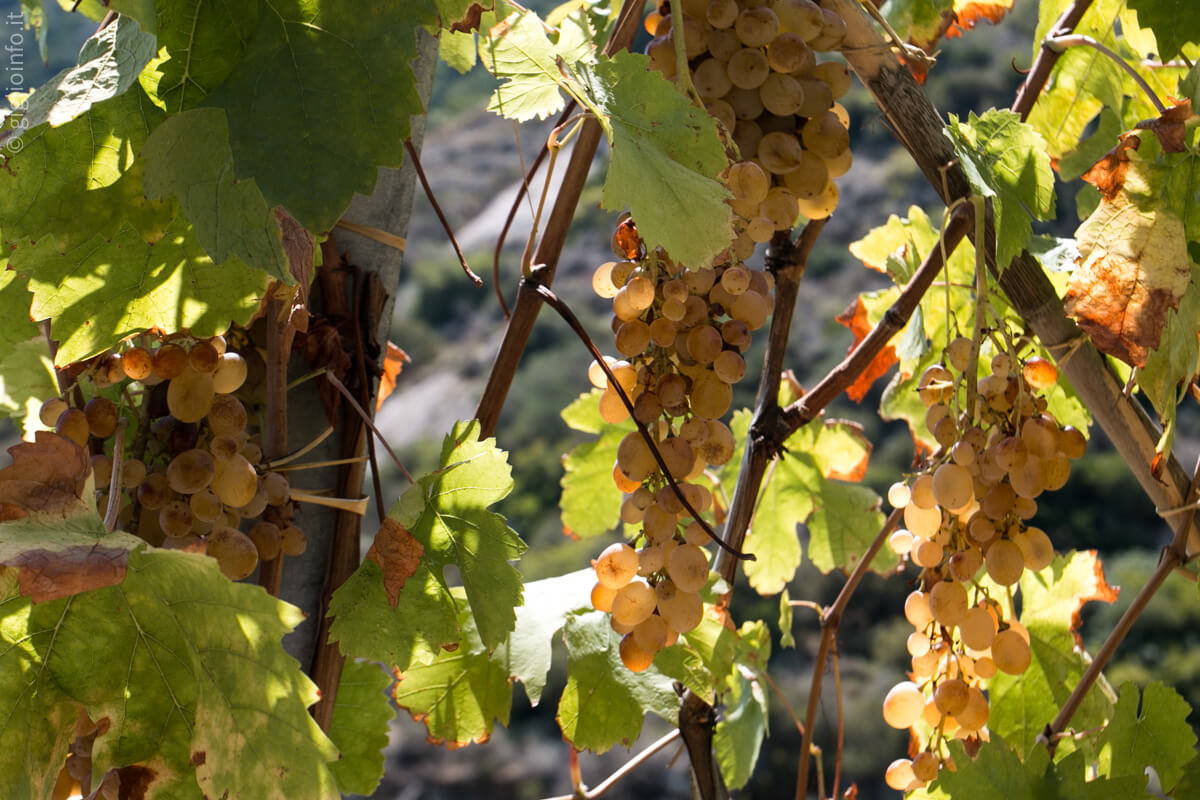
Ansonica
The Ansonaco, the traditional wine of the island
- Related Contents
- Disciplinare DOC Ansonica
- Vini Colli di Maremma
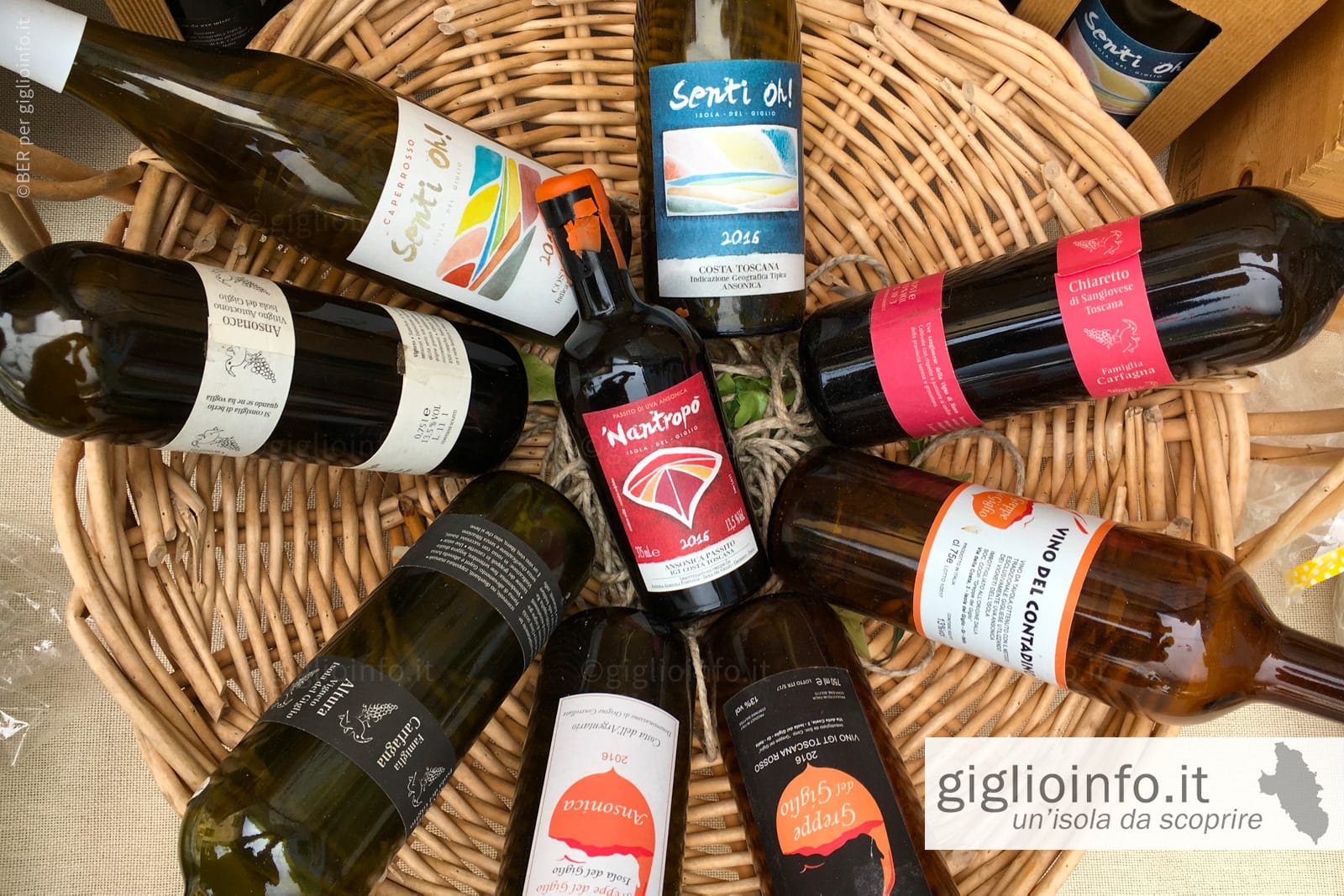
Cantine
Wineries in Giglio
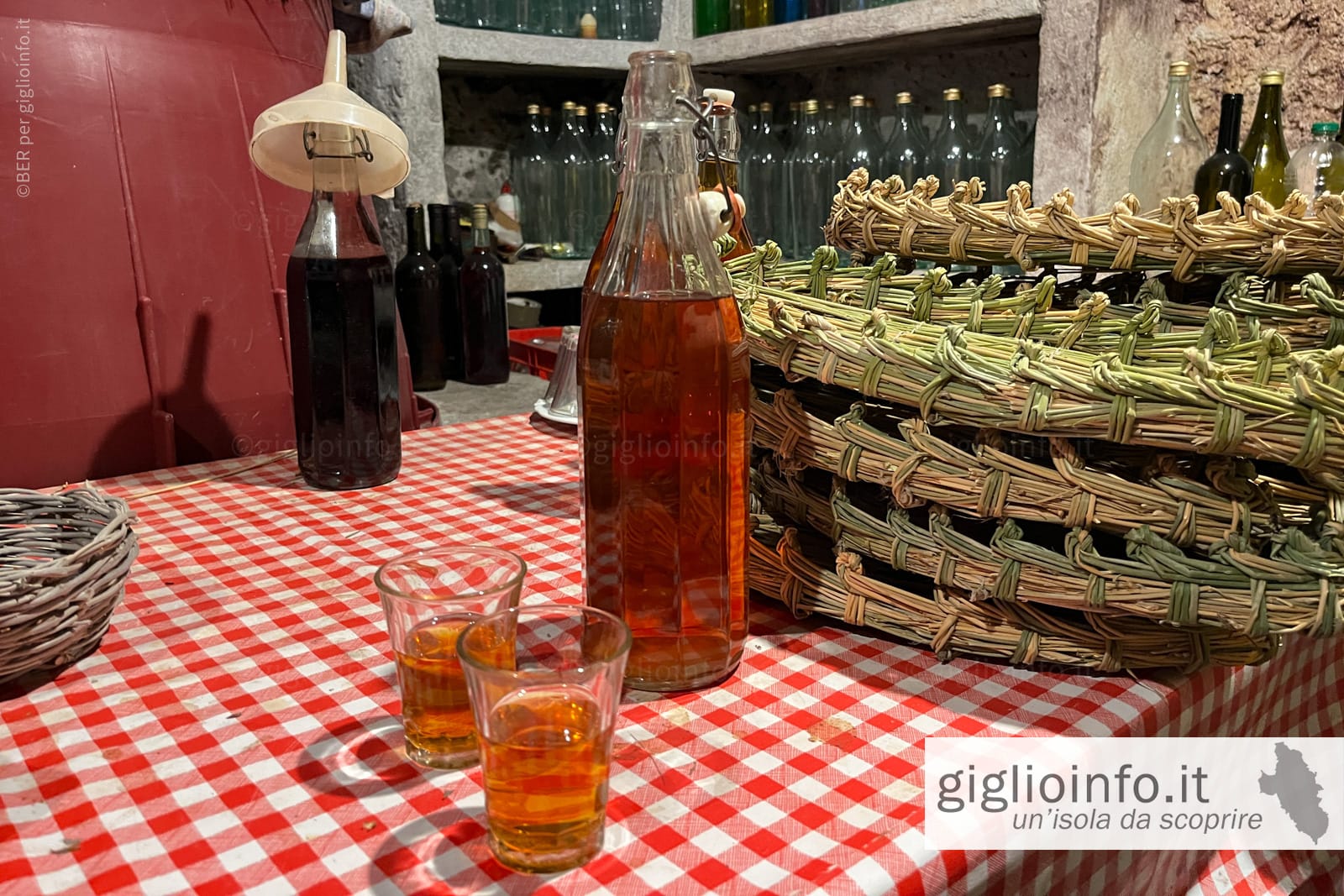
wine
The traditional wine of the island
There are many private individuals who continue to produce the typical wine of the island in the company of friends, mostly for their own consumption. They all follow the traditional methods and some even use the foot press. The resulting Ansonaco is a truly unique bulk wine: amber in colour, with a pungent, astringent taste similar to a red, very strong yet drinkable.
If you stroll through the medieval village of Giglio Castello and find a wine cellar with its door open, step inside: you may be lucky enough to taste the “real wine” of the island. Alternatively, you can find it in some bars that serve the traditional Giglio wine in the typical small glasses.
Advertisement
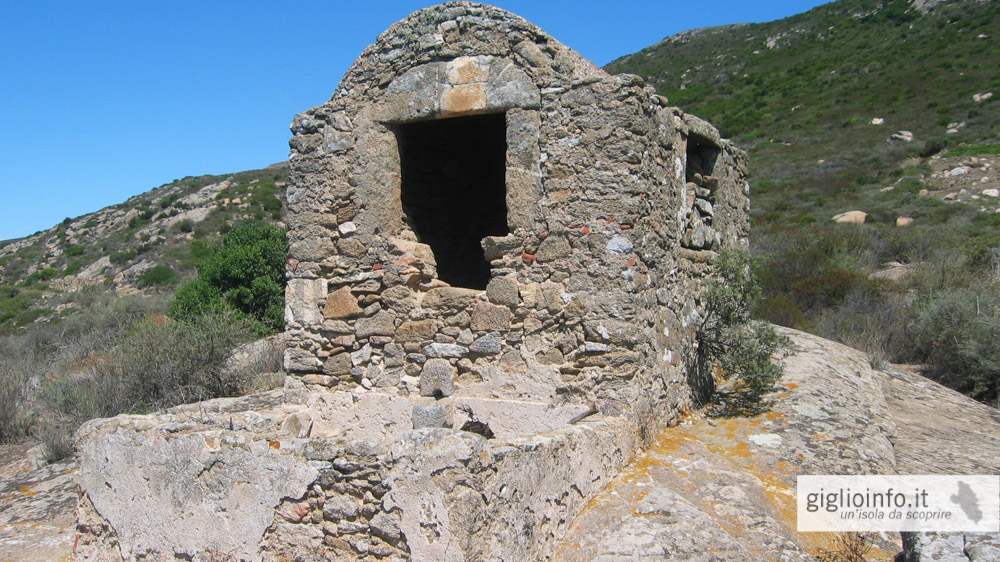
Palmenti
The vineyards are scattered on the terraced slopes of the entire island of Giglio, where the curious Palmenti constructions, built between 1500 and 1700, stand out.
For the pressing of the grapes, there are one or more basins in a kind of brick aedicule, often dug directly into the granite rock. In the first one the grapes were crushed with the feet and in the second one, lower and connected by a hole called “cucchione“, the must was collected. The liquid was collected in goatskins through a second hole at the lowest point of the palmento and then transported to the cellars of Giglio Castello with the help of the donkey.
This system allowed the farmers to collect the must close to the harvest and saved them the trouble of transporting the grapes to the village.
Giglio and Surroundings
Wines of Colli di Maremma
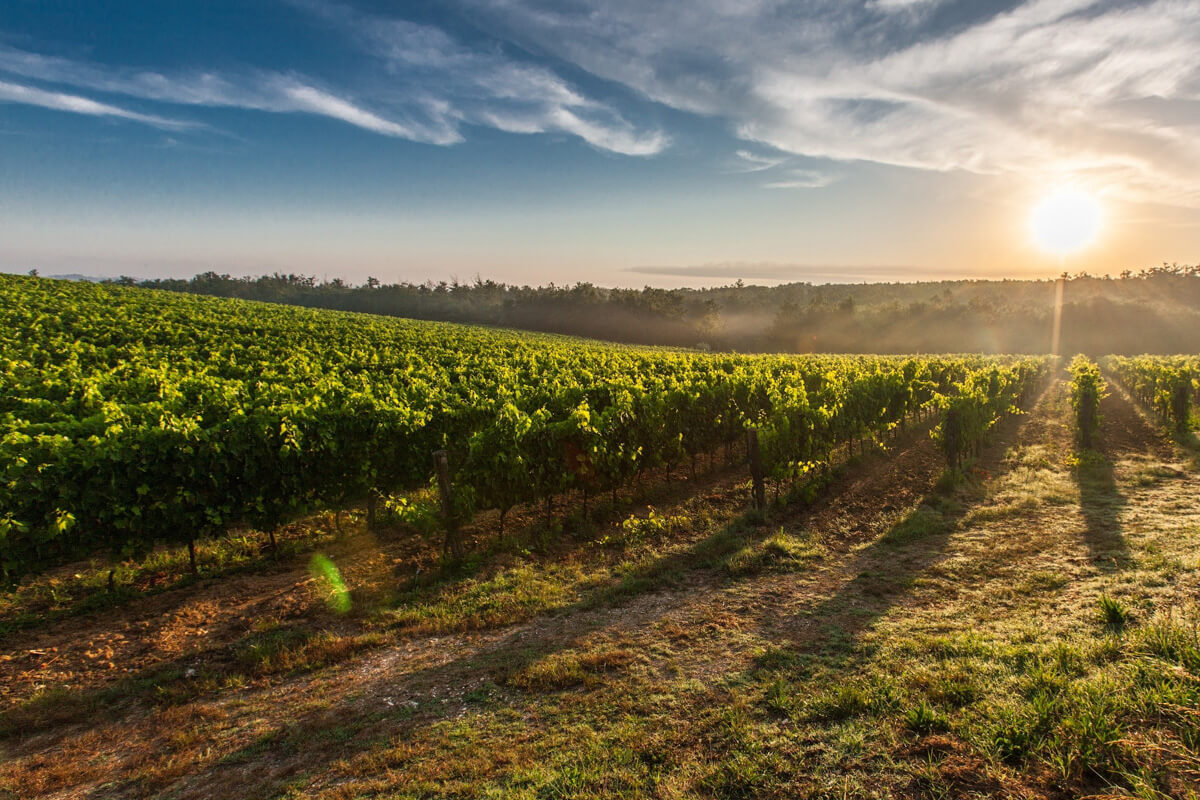
Advertisement
you are here:
Home » Home » Food and Drink » Wines and Viticulture
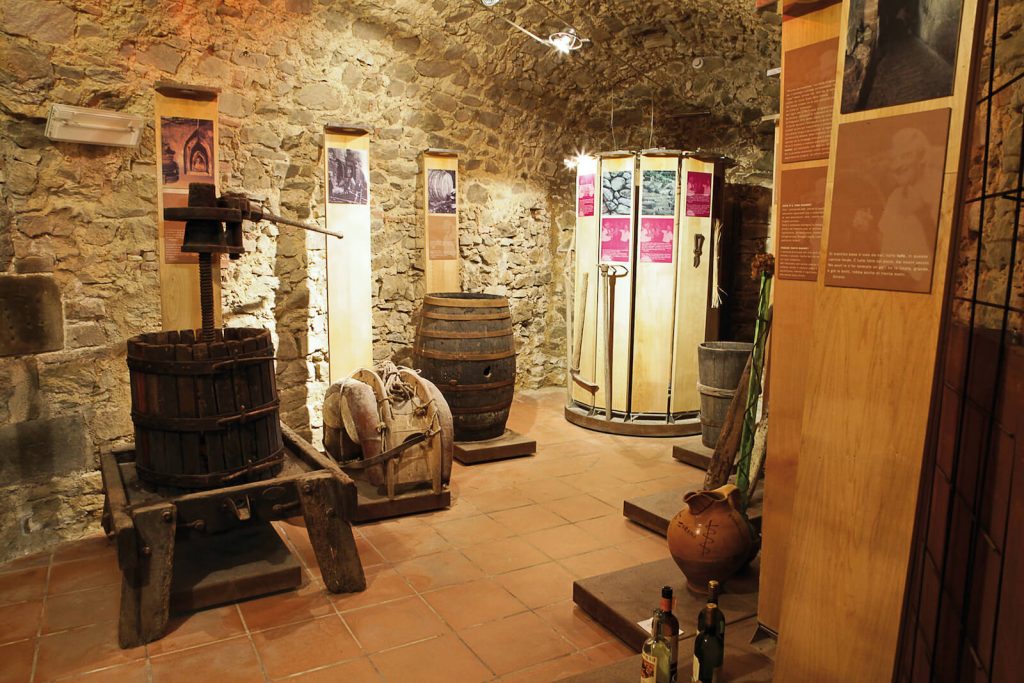
Giglio and Surroundings
Wine and Vine Museum
- Museo della Vite e del Vino di Scansano
-
Piazza del Pretorio
58054 Scansano GR - +39 0564-509106
- musei@comune.scansano.gr.it
- www.comune.scansano.gr.it
- Brochure

